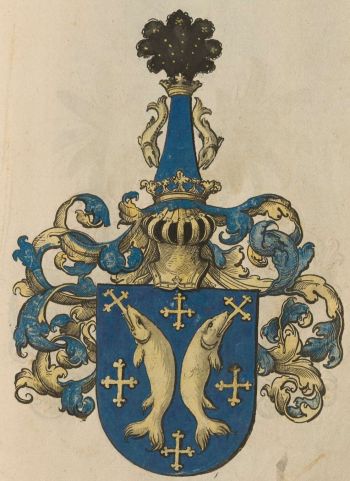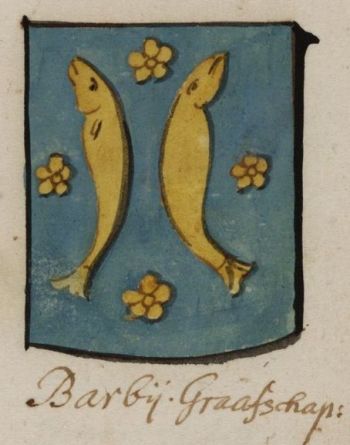Duchy of Bar: Difference between revisions
Knorrepoes (talk | contribs) m (Text replacement - "{{fr}}" to "") |
Knorrepoes (talk | contribs) m (Text replacement - "{| class="wikitable"↵|+Official blazon↵|-↵|'''French'''↵| {{blazon wanted}}↵|-↵|'''English''' ↵| {{blazon wanted}}↵|}" to "{| class="wikitable" |+Official blazon |- |'''French''' | blazon wanted |- |'''English''' | blazon wanted |}") |
||
| Line 9: | Line 9: | ||
|- | |- | ||
|'''French''' | |'''French''' | ||
| | | blazon wanted | ||
|- | |- | ||
|'''English''' | |'''English''' | ||
| | | blazon wanted | ||
|} | |} | ||
Revision as of 07:03, 6 April 2023
DUCHY OF BAR
| French | blazon wanted |
| English | blazon wanted |
Origin/meaning
The Duchy of Bar was a principality of the Holy Roman Empire encompassing the pays de Barrois and centred on the city of Bar-le-Duc. It was held by the House of Montbéliard from the 11th century. Part of the county, the so-called Barrois mouvant, became a fief of the Kingdom of France in 1301 and was elevated to the Duchy of Bar in 1354. The Barrois non-mouvant remained a part of the Empire. From 1480, it was united to the imperial Duchy of Lorraine.
Both imperial Bar and Lorraine came under the influence of France in 1735, with Bar ceded to the deposed king of Poland, Stanisław Leszczyński. According to the Treaty of Vienna (1738), the duchy would pass to the French crown upon Stanisław's death, which occurred in 1766.
The arms show a field semy of crosses and two canting barbels. Different variations of the arms exist, as shown in the image above from 1530.
The arms in the Wapen- en Vlaggenboek van Gerrit Hesman (1708) |
Literature : Historical background from Wikipedia

